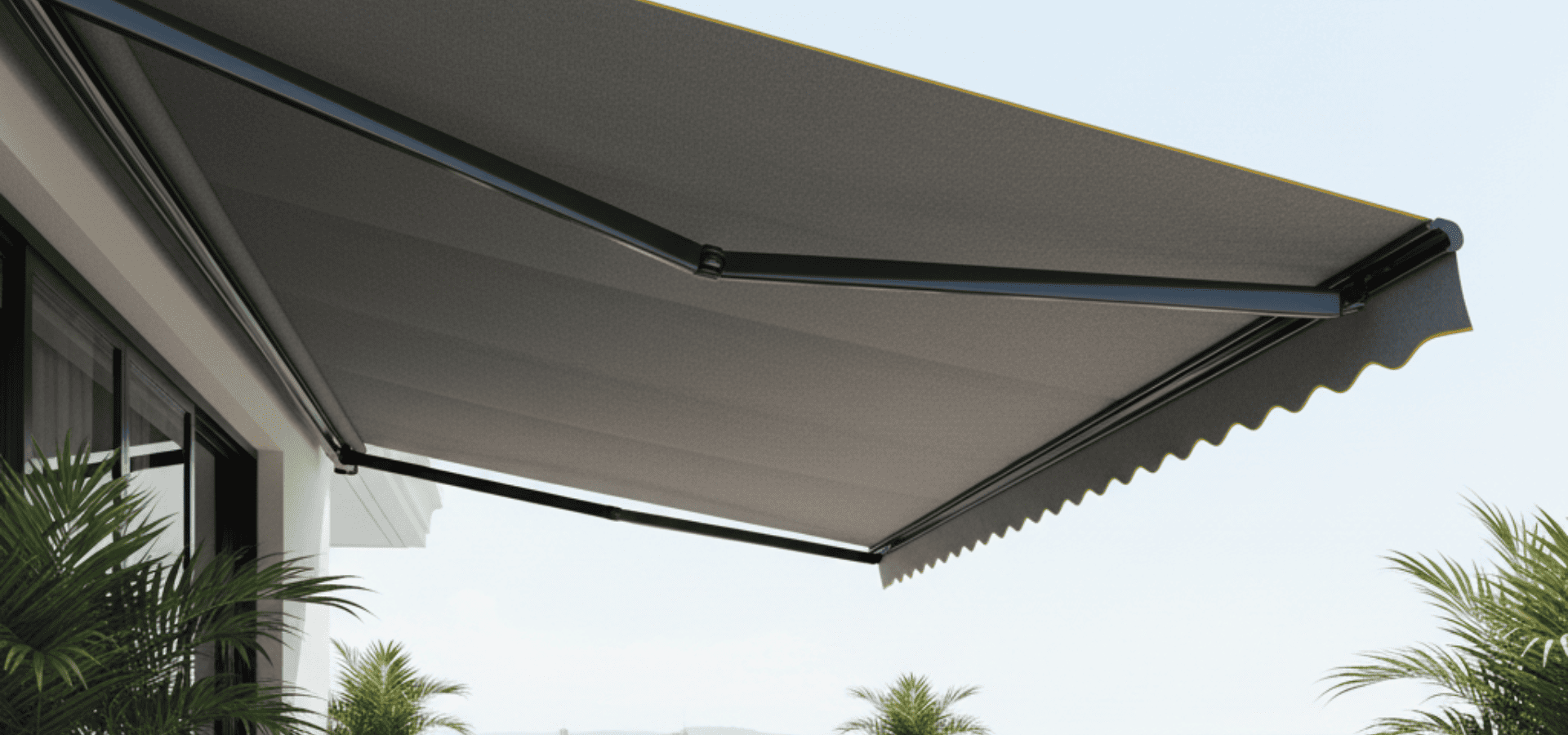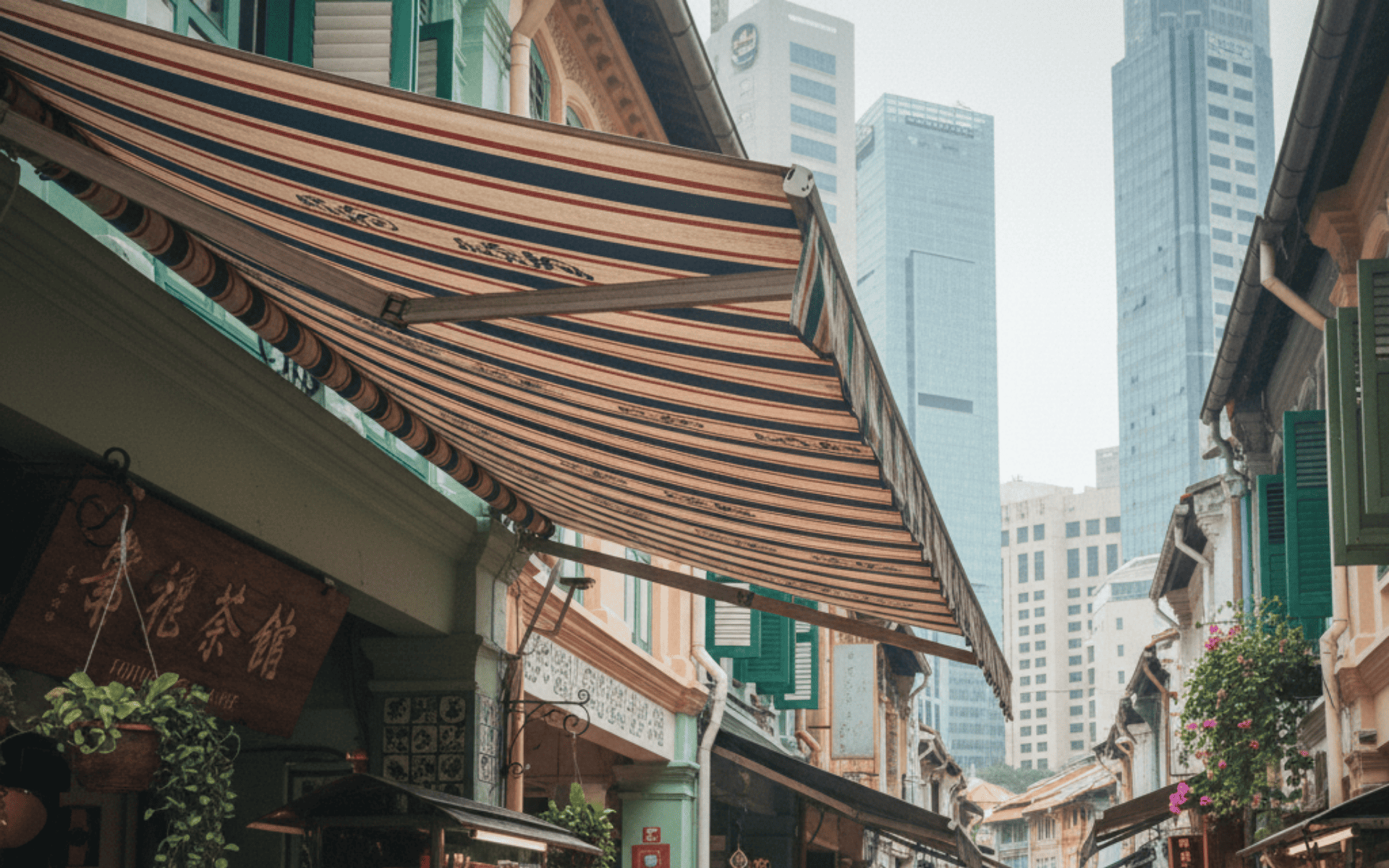Greenhouse And Plant Shade Awnings
There’s something quietly magical about a greenhouse at dawn. Soft, golden light filtering through the glazing, warming the air with slow intention — the whole space exhales, and the plants perk up.
But give it a few hours, and that calm can turn to chaos: blistering heat, scorched leaves, stalled growth. The irony is that the same sunlight that plants need to thrive is often what ends up stressing them out the most.
That’s where shade awnings come in. (And no, they’re not just for patios.)
In greenhouses and outdoor grow zones, a well-chosen awning is one of the most effective tools for keeping your cultivation space balanced. A well-positioned awning doesn’t just block sunlight: it shapes it. It diffuses it.
It gives you a level of control that cracked windows and makeshift curtains can’t compete with.
This guide unpacks the value of shade awnings for greenhouse growers. We’re covering what they do, what kinds are out there, and how to choose the right setup based on your crops, your climate, and the kind of control you want.
Your plant-babies only deserve the best.
The Problem With Full Sun (Even For Sun-Loving Plants)
Most plants evolved to grow in open air — not sealed boxes of magnified heat. The greenhouse effect isn’t just a metaphor here. It’s real, and it amplifies everything: sunlight, radiant heat, humidity swings. It’s lovely in winter, but it's brutal in summer.
You’ll see the signs. Leaves bleach and curl. Flowers drop too early. Soil dries out faster than you can water. Some plants stall their growth entirely, while others just throw in the towel.
And this gets even worse if you’re working with seedlings, cuttings, or shade-lovers. The stress will kill your flora.
A retractable or adjustable shading system gives you back the reins and the power to protect your plants. It helps you stay ahead of heat spikes, fine-tune your light levels, and protect delicate crops when they’re most vulnerable. Especially in places like Singapore — where blazing sun and sudden downpours can swap places in minutes — having that kind of agility makes all the difference.
Shade Isn’t About Darkness — It’s About Balance
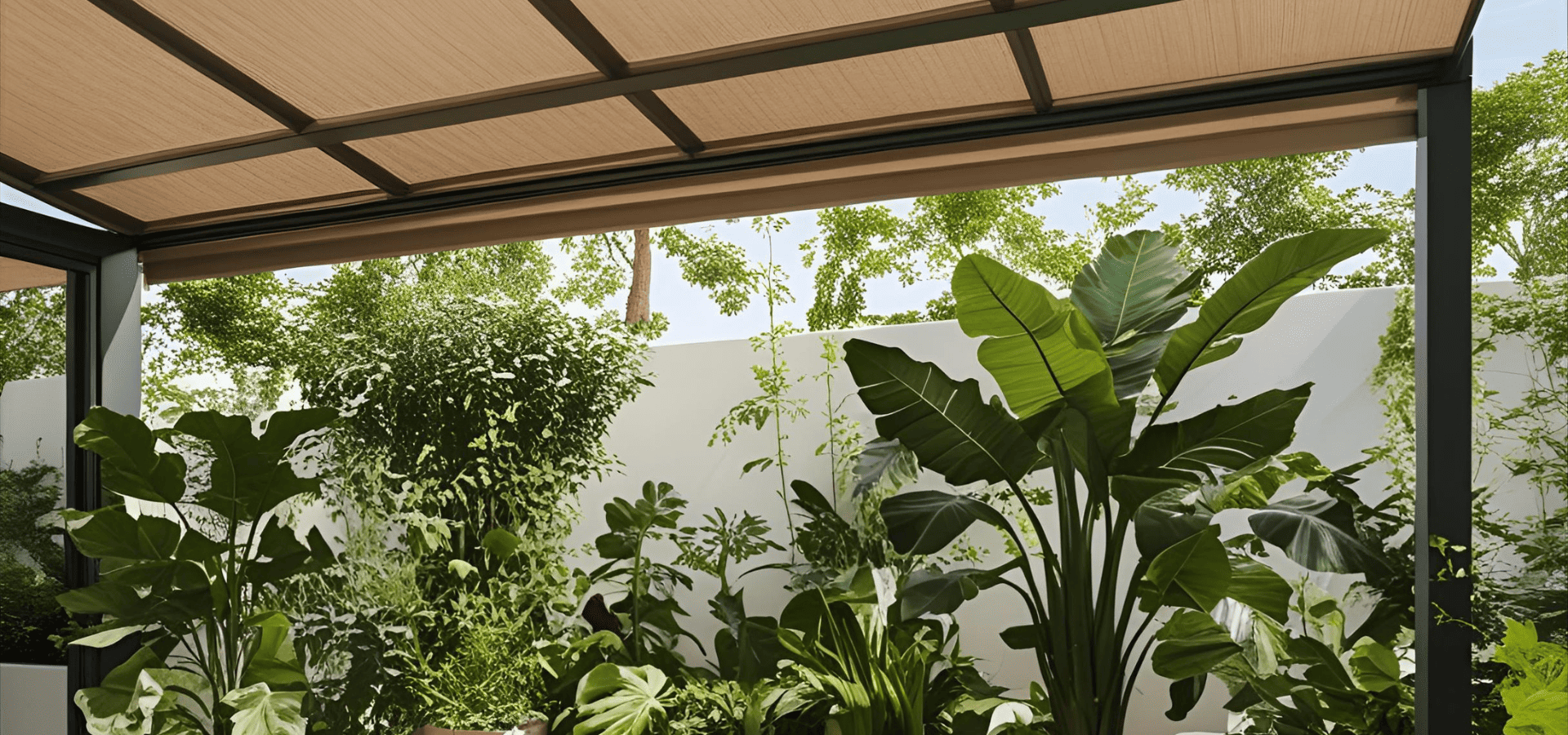
A common myth of plant awnings is that shading cuts productivity. But in most cases, the opposite’s true. Most plants don’t just want light… They want consistency and measured moderation. A crop that gets 70% of its ideal light without stress will outperform one that gets the full blast and spends the rest of the day trying not to die.
Shade awnings are great at hitting that sweet spot. When used smartly, they:
- Lower peak internal temps by several degrees
- Shield leaves and fruit from direct UV damage
- Slow down evaporation, easing water stress
- Help hold stable humidity levels
- Stretch your growing season on both ends
In short, they transform your greenhouse from a volatile glass oven into a more predictable environment. And all in a low-maintenance way — no fans, chillers, or constant fiddling.
Awnings vs Shade Cloth: What’s The Real Difference?
If you’ve ever thrown shade cloth over your greenhouse, you’re not alone. It’s practical. It’s cheap. And it works.
…to a point.
However, shade cloth is also a bit brutish. It’s a static choice: once it’s up, that’s it. There are no easy mid-season tweaks, and depending on how you install it, it can interfere with airflow or create heat pockets under saggy sections. Plus, let’s be honest… it’s annoying to take down when the weather flips.
Awnings sidestep all of that.
They’re built for movement. Pull them back on overcast days, and then extend them in the midday sun when you need some quick shade. You can even automate them entirely if you’re fancy.
Some awnings mount outside to stop heat before it hits the glass, while others install inside and soften the light from within. Either way, they offer way more precision and way less messing around.
And unlike fabric that flaps, sags, or goes mouldy after a wet week, a well-made awning quickly becomes part of your greenhouse infrastructure. They’re tidy, durable, and designed to last.
External vs Internal: Two Ways To Tame The Sun
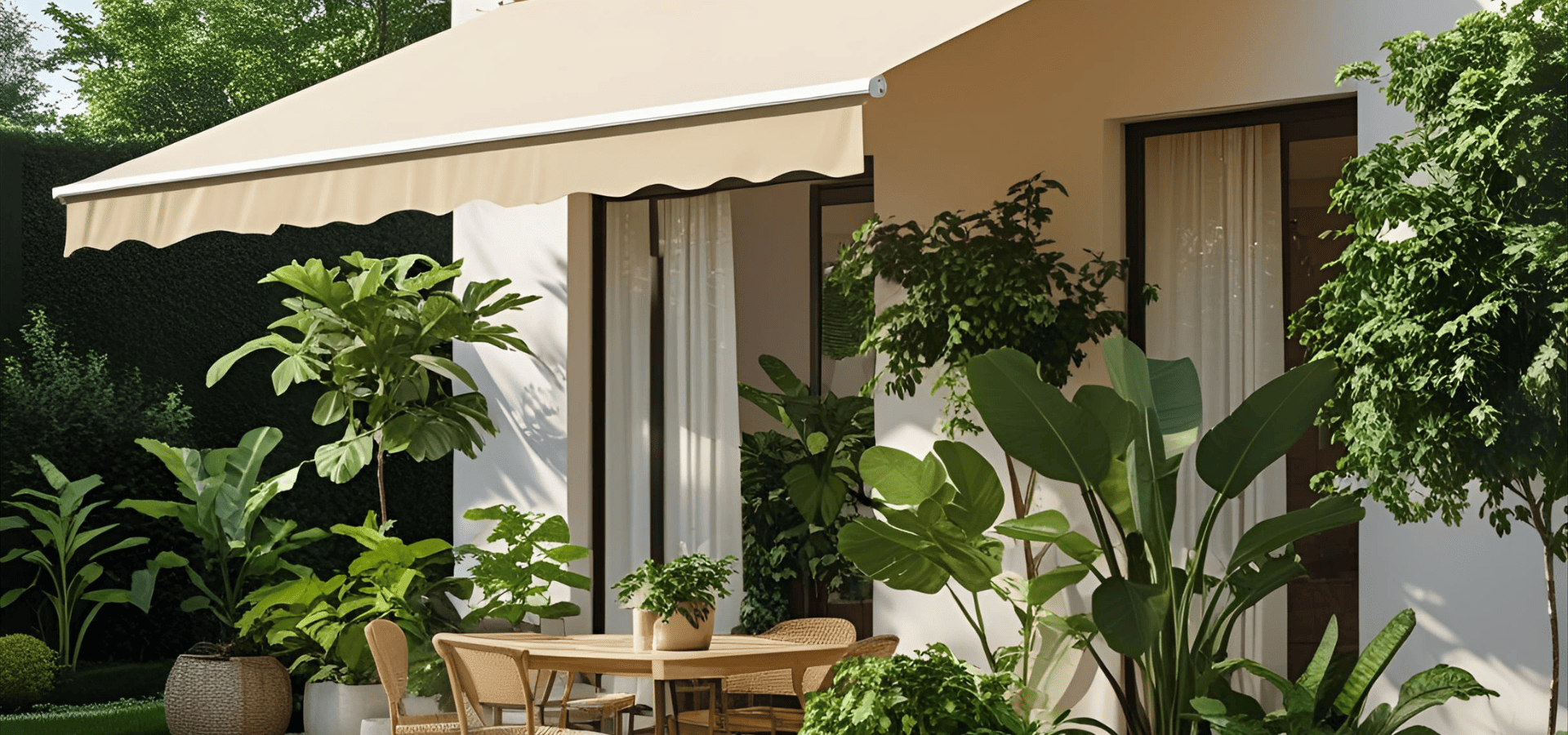
The biggest choice you’ll face? Where to put your awning: on the outside or tucked inside.
External awnings are the top-tier choice for temperature control. They block sunlight before it even reaches the glass, cutting heat at the source. On a scorching day, this can completely change your internal climate, keeping things cooler and reducing your need for mechanical ventilation.
That said, external awnings do need to be tough. Look for UV-stable fabrics, strong fixings, and mounts that can handle wind, especially for some of the gusts that hit Singapore. But precautions aside, external awnings are unmatched for summer heat management.
Internal awnings (usually roller-style) are better for diffused light. They live inside, so they’re protected from the weather and often easier to retrofit. They’re also useful if you’re using your greenhouse as a workspace or retreat, thanks to their glare control.
But it’s critical to note that internal setups won’t stop heat from entering a space. They’ll soften the intensity, but they won’t cool the air as effectively.
Some growers actually combine both — external awnings for big seasonal shifts and then internal shades for zoned light control. That layering can be surprisingly effective, especially if you’re juggling different crop needs.
Fabric Matters: What’s Doing The Actual Shading?
Not all shade is created equal. When it comes to light, airflow, and moisture, an awning’s material defines the impact.
For greenhouses, breathable mesh fabrics are usually the best option. They filter light, allow airflow, and shed rain without pooling. Look for materials that are UV-resistant, mildew-resistant, and rated for long-term outdoor use.
The shade density — usually listed as a percentage of light blocked — is another key factor:
- 30–50% is great for tomatoes, cucumbers, and other sun-lovers
- 60–70% is good for leafy greens, herbs, and also seedlings
- 80%+ is really reserved for orchids, ferns, or ultra-sensitive crops
Some growers swap awning materials seasonally. Others go with a medium-density fabric year-round and rely on retraction for control. There’s no one-size-fits-all; just so long as you don’t overdo it. Too much shade, and you’ll stunt growth.
The goal isn’t gloom. It’s balance. Soften the sun’s intensity while keeping things bright enough for healthy growth.
Fixed vs Adjustable: How Much Control Do You Really Want?
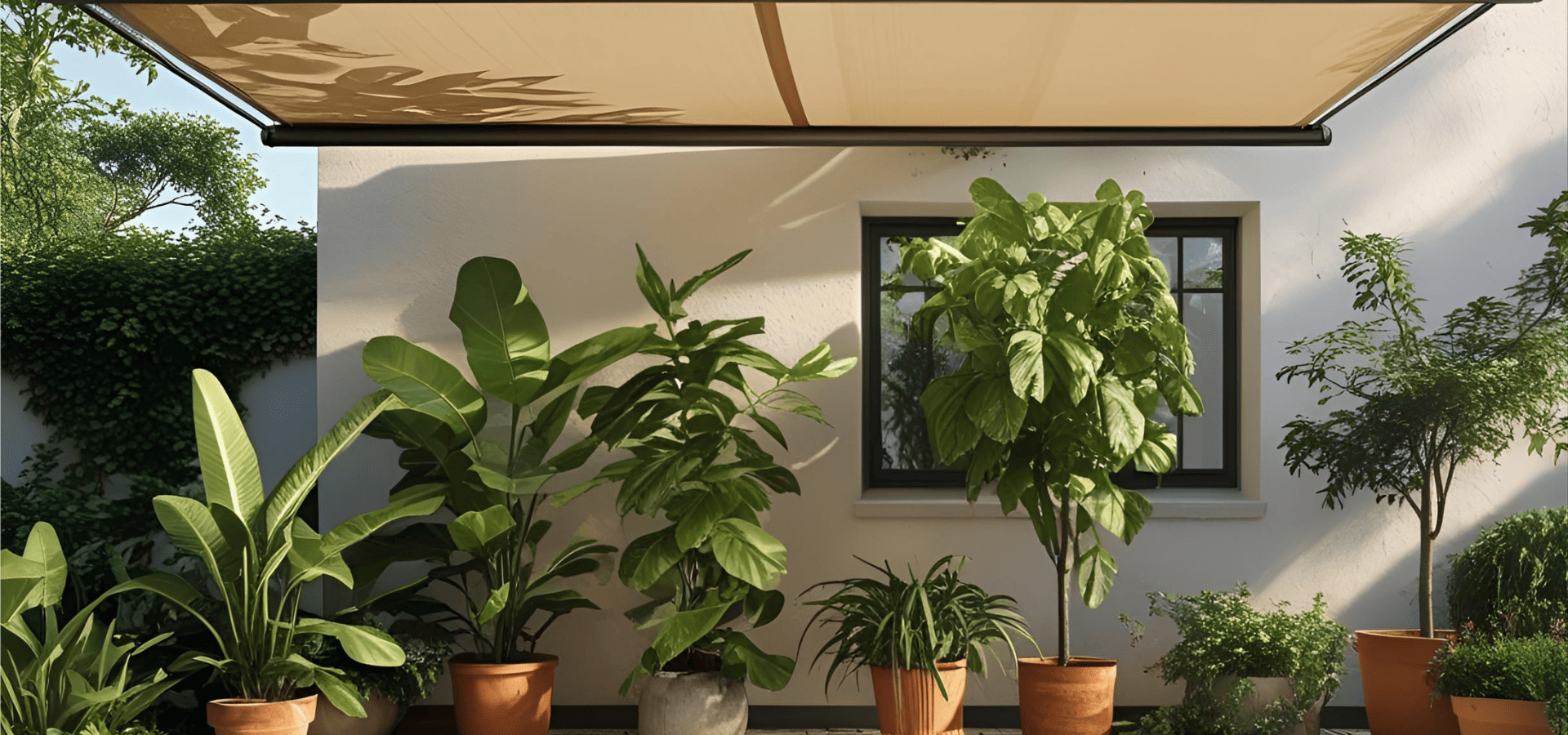
Some awnings stay put. Others move. And if you’re working with a variety of crops or year-round cycles, that distinction matters.
There are two types of awnings that we always tell customers to choose between:
- Fixed awnings are straightforward. They’re mounted in place, don’t move or retract, and are common on lean-tos and small potting setups. It’s permanent partial shade with no moving parts, sturdy and surprise-free.
- Retractable systems are far more versatile. Manual crank handles work well enough for this, however, motorized awnings with timers or sensors take it up several notches. They respond to weather, light, or internal temps on autopilot, and some even sync with smart greenhouse systems.
- We also have vented awnings, which include built-in openings or breathable panels designed to release trapped heat. They offer some passive ventilation benefits while still providing shade. However, they’re rarely used in greenhouse setups, since most plant shading is handled through breathable mesh fabrics or retractable systems that already manage heat and airflow more effectively. (But they do provide a third solution nonetheless if you’re interested.)
If your greenhouse faces south, or if you want dynamic control, go with a retractable awning, ideally motorized. It’s not just about convenience but also precision. You get hour-by-hour light control with crop-by-crop calibration.
But, if you’re not in a position to capitalize on a retractable awning or need something more rugged, fixed is the way to go.
Shade As Part Of A Bigger Ecosystem
Your greenhouse isn’t just a structure. It’s a system — a delicate dance of light, temperature, airflow, and moisture. Shade is only one part of that choreography.
When it’s set up well, an awning can ease the load on everything else. Evaporation slows, irrigation eases, and vents don’t have to work overtime. Ultimately, this results in fewer humidity swings and healthier plants that resist pests better.
And because awnings usually sit outside the growing space, they don’t crowd your plants or clutter your workflow. They’re the quiet operator in the background, keeping conditions steady so you can focus on the fun stuff.
The point is to slot an awning into your existing ecosystem, and don’t treat it like a Hail Mary either. It’s one ingredient to your growing success.
When Shade Becomes A Smart Upgrade
So how do you know when you need a plant shade or greenhouse awning? If you’ve been muddling through with a DIY fix, here’s a little gut check.
You might be ready for a proper awning system if:
- Your greenhouse is a glorified pizza oven by midday
- Young plants regularly wilt or scorch
- You’re adjusting a temporary shade every few days
- Certain zones underperform due to sun exposure
- You’ve ruled out pests, water, and nutrients as culprits affecting your plants
The shift is subtle. You’ll know it’s working not by what suddenly improves, but by what you stop having to fix.
A Final Word On Light And Control
This isn’t just about awnings. It’s about how we engage with sunlight. (I.e. the one variable you can’t just switch off.)
Growing strong, resilient plants means managing moving targets: heat, water, airflow. But light is still always the core.
A shade awning doesn’t dull the sun. It refines it. It lets you collaborate with it on the project of raising your plant babies. You don’t have to keep playing defence with the sunbeams.
And that’s what makes it such a smart, quietly powerful upgrade. Not because it’s flashy, but because it solves problems before they start.
For growers who care — whether it’s your livelihood or just the best part of your day — that kind of control isn’t overkill. It’s the difference between surviving and thriving. That high-level power user control?
That’s the line between the plants that limp along and the ones that absolutely flourish.
